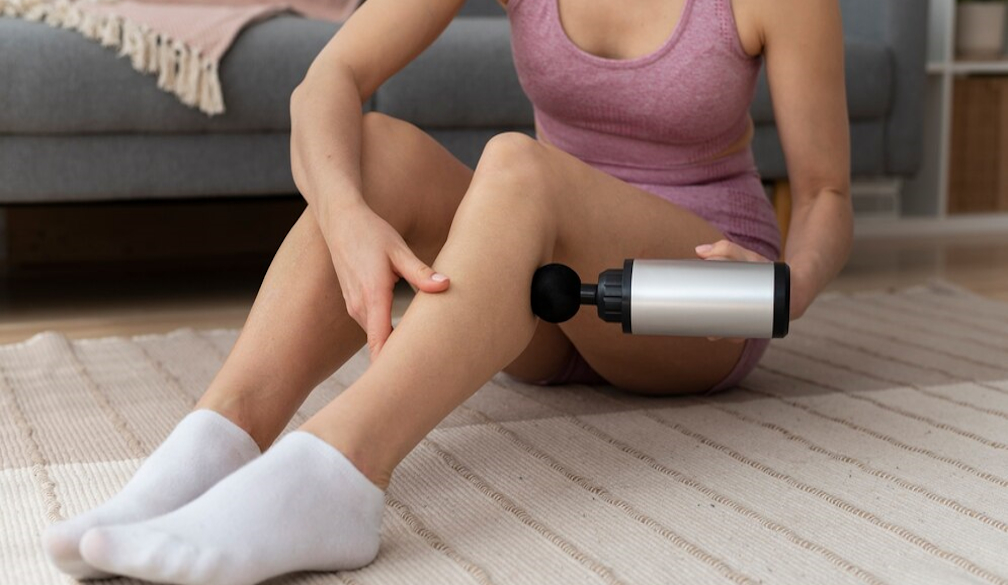5 Effective Tips to Help Alleviate Joint Pain

Introduction
Joint pain is a common issue that affects millions of people worldwide, impacting daily activities and overall quality of life, and Oxycell hyperbaric chambers can offer relief and promote healing. Whether it's due to arthritis, injury, or other conditions, joint pain can make even the simplest tasks challenging. The goal of this article is to provide practical and effective tips for alleviating joint pain and improving mobility, helping you lead a more active and comfortable life.
Tip 1: Maintain a Healthy Weight
Explanation
Excess weight puts significant additional stress on joints, especially those in the knees, hips, and lower back. This added pressure can accelerate the wear and tear on joint cartilage, leading to increased pain and a higher risk of conditions like osteoarthritis. Maintaining a healthy weight reduces this stress, helping to alleviate pain and improve joint function.
Advice
Achieving and maintaining a healthy weight involves a combination of a balanced diet and regular exercise. Here are some strategies to help:
- Strength Training: Engage in strength training exercises at least two days a week. Building muscle helps support your joints and can improve overall body mechanics, reducing joint pain.
- Hydration: Drink plenty of water throughout the day. Staying hydrated helps maintain joint lubrication and overall body function.
- Consult a Professional: Consider working with a dietitian or a fitness trainer to develop a personalized plan that suits your specific needs and goals.
By maintaining a healthy weight, you can significantly reduce the stress on your joints, thereby alleviating pain and improving your overall mobility and quality of life.
Tip 2: Stay Active with Low-Impact Exercise
Explanation
Regular physical activity is crucial for maintaining joint health and flexibility, which can help reduce pain. Exercise strengthens the muscles around your joints, improves your range of motion, and enhances overall joint function. It also helps with weight management, further reducing the stress on your joints. Staying active prevents stiffness and keeps joints well-lubricated, making daily movements easier and less painful.
Advice
Incorporate low-impact exercises into your routine to reap the benefits without putting unnecessary strain on your joints. Here are some recommended activities:
- Swimming: Swimming and water aerobics are excellent for joint health because the buoyancy of water reduces the impact on your joints while providing resistance to strengthen muscles. Apart from swimming, you may also consider hydrotherapy, which involves therapeutic exercises in warm water. These activities improve cardiovascular health and joint flexibility.
- Walking: Walking is a simple and effective way to stay active. It's gentle on the joints and can be easily incorporated into your daily routine. Aim for brisk walking to get your heart rate up while still being kind to your joints.
- Yoga: Yoga improves flexibility, strength, and balance. It involves gentle stretching and strengthening exercises that can help reduce joint pain and stiffness. Yoga also promotes relaxation and stress reduction, which can indirectly benefit joint health.
By incorporating these low-impact exercises into your routine, you can keep your joints flexible, reduce pain, and improve your overall physical health. Regular activity is key to maintaining mobility and enjoying a higher quality of life
Tip 3: Use Hot and Cold Therapy
Explanation
Hot and cold therapy are effective, natural methods for relieving joint pain and reducing inflammation. Applying heat can relax muscles, increase circulation, and soothe stiffness, while cold therapy can reduce swelling, numb pain, and decrease inflammation in the joints.
Advice
Knowing when and how to use each type of therapy is crucial for getting the best results:
- Heat Therapy: Use heat to relax muscles and increase blood flow to the affected area. This can help alleviate stiffness and improve joint flexibility.
- When to Use: Apply heat therapy before physical activity or exercise to warm up your muscles and joints. It can also be used to relieve chronic pain and muscle spasms.
- Methods: Use a warm towel, heating pad, hot water bottle, or take a warm bath or shower. Ensure the temperature is comfortable and not too hot to avoid burns. Apply heat for 15-20 minutes at a time.
- Cold Therapy: Cold therapy helps reduce inflammation and numb the pain, making it particularly effective for acute injuries or flare-ups.
- When to Use: Apply cold therapy immediately after an injury or during a flare-up to minimize swelling and pain. It's also useful after physical activity to soothe sore joints.
- Methods: Use an ice pack, a bag of frozen vegetables, or a cold gel pack. Wrap the cold source in a thin cloth to protect your skin. Apply cold therapy for 10-15 minutes at a time, allowing your skin to return to normal temperature between sessions.
By appropriately using hot and cold therapy, you can effectively manage joint pain and inflammation, enhancing your comfort and mobility. Integrate these therapies into your pain management routine to experience their full benefits.
Tip 4: Incorporate Joint-Friendly Foods into Your Diet
Explanation
Certain foods can play a significant role in reducing inflammation and supporting joint health. By including these nutrient-rich foods in your diet, you can help alleviate joint pain and promote overall well-being. Anti-inflammatory and antioxidant-rich foods, along with essential fatty acids, contribute to healthier joints and can potentially slow the progression of joint-related issues.
Advice
To support joint health and reduce inflammation, consider incorporating the following foods into your diet:
- Omega-3 Fatty Acids: Omega-3s are powerful anti-inflammatory agents that can help reduce joint pain and stiffness.
- Sources: Include fatty fish like salmon, mackerel, and sardines in your diet. Plant-based sources like flaxseeds, chia seeds, and walnuts are also excellent options.
- Antioxidants: Antioxidants help combat oxidative stress and inflammation, protecting your joints from damage.
- Sources: Berries (such as blueberries, strawberries, and raspberries), leafy greens (like spinach, kale, and Swiss chard), and other colorful fruits and vegetables are rich in antioxidants.
- Vitamin D and Calcium: These nutrients are essential for bone health, which is closely linked to joint health.
- Sources: Dairy products (like milk, yogurt, and cheese), fortified plant-based milks, and leafy greens provide calcium. Vitamin D can be obtained from sunlight exposure, fatty fish, and fortified foods.
- Collagen Supplements: A good option to supplement your diet, collagen for joints help maintain cartilage integrity and reduce inflammation. Incorporate hydrolyzed collagen supplements into your daily routine. Add collagen powder to smoothies, coffee, or other beverages, or take collagen capsules as directed.
Tip 5: Practice Good Posture
Explanation
Maintaining proper posture is essential for reducing stress on your joints and preventing pain. Poor posture can lead to misalignment of the spine and joints, causing undue pressure and discomfort. By practicing good posture, you can distribute your body's weight more evenly, minimize strain, and support overall joint health.
Advice
Here are some practical tips for improving your posture and protecting your joints:
- Use Ergonomic Furniture: Invest in ergonomic chairs and desks that support good posture. Ensure your chair supports the natural curve of your spine and that your feet rest flat on the floor. Your desk should be at a height where your elbows are at a 90-degree angle when typing.
- Avoid Prolonged Sitting: Sitting for long periods can lead to poor posture and joint pain. Take breaks every 30 minutes to stand, stretch, and walk around. Use a standing desk or an adjustable workstation to alternate between sitting and standing throughout the day.
- Be Mindful of Body Alignment: Pay attention to your body alignment during daily activities. Keep your shoulders back, chest lifted, and chin parallel to the floor. Avoid slouching or leaning to one side. When standing, distribute your weight evenly on both feet.
- Maintain a Neutral Spine While Sleeping: Choose a mattress and pillows that support a neutral spine position. Avoid sleeping on your stomach, as it can cause neck and back strain. Sleeping on your back or side with appropriate support is generally better for your health.
Conclusion
A holistic approach to managing joint pain is crucial for achieving lasting relief and improved mobility. By incorporating a balanced diet rich in joint-friendly foods, engaging in regular low-impact exercise, maintaining proper posture, using hot and cold therapy, and considering collagen supplements, you can effectively support your joint health. These combined efforts help reduce pain, enhance flexibility, and improve your overall quality of life. Embrace these strategies to maintain healthy, pain-free joints and enjoy a more active and fulfilling lifestyle.





